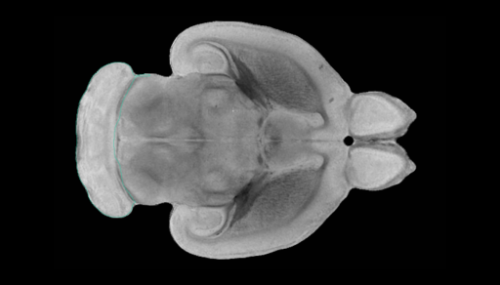January 4, 2016 report
Researchers identify the brain circuits involved in anhedonia in rats

(MedicalXpress)—A combined team of researchers from Stanford and Cornell University's has found what they believe to be the brain circuits that are involved in the development of anhedonia—where a person, or rat, is incapable of feeling pleasure. In their paper published in the journal Science, the team outlines their experiments with rats and why they believe their findings could provide a possible path to curing the disorder in people. Trevor Robbins with the University of Cambridge offers a Perspectives piece on the work done by the team in the same journal issue and outlines possibilities for where such work may head in the future.
Anhedonia isn't a disease, instead, it is generally a symptom that develops as part of another malady, such as schizophrenia, or chronic depression. Medical researchers would like to find its source so that a treatment might be developed. With that goal in mind, the researchers with this new effort combined optogenetics with fMRI brain scans of awake rats to locate the parts of the brain that appear to be involved in the condition.
Scientists believe other animals, such as rats are able to feel pleasure because of experiments that have been conducted to test for it—one such simple experiment has revealed that rats prefer water with some sugar in it—lapping it up apparently provides them with some degree of pleasure. The researchers used this bit of information in their experiments—if they could cause a rat to cease preferring sugar water over plain water, then they very likely had found a way to induce anhedonia.
To make that happen, they used optogenetics, which is where light is shone onto nerve cells that have been altered to respond to light. In this instance, the light was shone onto neurons in the rats' midbrains, which the researchers believed, would cause a boost in activity related to the reward system in the brain. They then used fMRI scans to look for such an increase, letting them know they had found the right spot. Then, they stimulated neurons in the Ventromedial prefrontal cortex, which the scans showed, caused a decrease of blood flow (activity) in the striatum—meanwhile the rats ceased showing a preference for sugar in their water—stimulating other nearby parts showed a loss of interest in socializing. Taken together, the researchers believe their results offer evidence of the mechanics involved when rats experience anhedonia, which they hope will lead to similar findings in humans.
More information: E. A. Ferenczi et al. Prefrontal cortical regulation of brainwide circuit dynamics and reward-related behavior, Science (2015). DOI: 10.1126/science.aac9698
ABSTRACT
Motivation for reward drives adaptive behaviors, whereas impairment of reward perception and experience (anhedonia) can contribute to psychiatric diseases, including depression and schizophrenia. We sought to test the hypothesis that the medial prefrontal cortex (mPFC) controls interactions among specific subcortical regions that govern hedonic responses. By using optogenetic functional magnetic resonance imaging to locally manipulate but globally visualize neural activity in rats, we found that dopamine neuron stimulation drives striatal activity, whereas locally increased mPFC excitability reduces this striatal response and inhibits the behavioral drive for dopaminergic stimulation. This chronic mPFC overactivity also stably suppresses natural reward-motivated behaviors and induces specific new brainwide functional interactions, which predict the degree of anhedonia in individuals. These findings describe a mechanism by which mPFC modulates expression of reward-seeking behavior, by regulating the dynamical interactions between specific distant subcortical regions.
© 2016 MedicalXpress


















